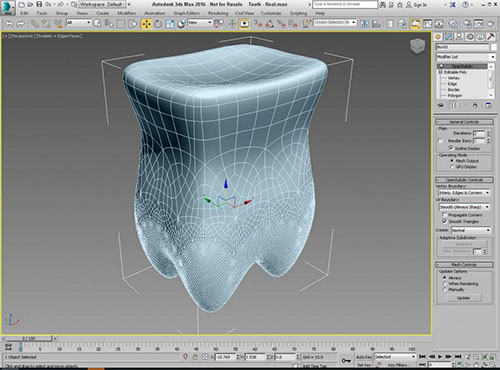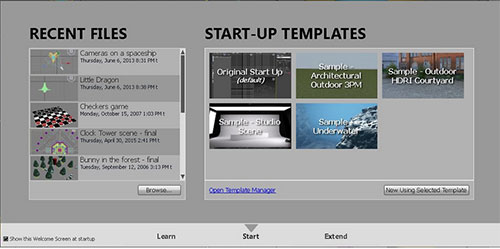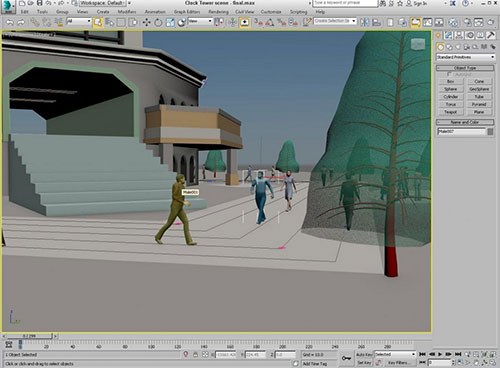
3ds Max 2016 is arrived in the market with a series of new and exciting features like the Physical Camera, the Camera Sequencer and support for Templates. Kelly L Murdock, the recognized freelance consultant and author has briefly analyzed some of its outstanding features :-
Max Creation Graph: Inclusion of MaxScript, a intuitive set of tools, to the scripting interface of 3ds Max 2016. It facilitates the users expanding the functionality of the software in various ways. Any feature can be customized according to the need of the user. But inorder to use it, one should be well versed with programming constructs. To simplify MaxScript, the wizards at Autodesk have introduced a new method to form the custom tools and it is known as Max Creation Graph or MCG for short.
Max Creation Graph refers to a visual interface for generating MaxScript code. It performs by combining various deverse nodes in a manner identical to the Slate Material Editor. These nodes are useful for producing procedural content, modifiers, and unique tools.
While dealing with a unique graph, it can be saved as a compound to be reprocessed for creaing more complicated functionality.

Image Courtesy: www.gamedev.net
Camera Sequencer: 3ds Max 2016 contains a new Camera Sequencer that facilitates the users to opt for which camera is utilized through which frames. It is easily accomodated inside the timeline devoid of all the overhead. The new Camera Sequencer allows the user to cut amid cameras, trim and reorder shot sequences just dragging inside a revised timeline crearted with the State Sets interface. All these actions are performed keeping the entire animation as it is.
Open SubDiv Support: 3ds Max 2016 provides support for the OpenSubDiv modeling construct. This format can apply the parallel CPU and superior GPU architectures for quicker viewport demonstration. There exist the new crease and creaseSet modifiers inside 3ds Max 2016 to characterize hard edges.

Image Courtesy: www.gamedev.net
Cloud Rendering: With 3ds Max 2016, the users can start rendering by the Autodesk 360 cloud servers. Every render costs a number of credits, but it saves significant times at specific times. The Cloud rendering option is provided inside the Render Scene dialog box.
New Physical Camera: With the inclusion of new Physical Camera feature, cameras now contain settings for Shutter Speed, Aperture, Depth of Field and Exposure that simplifies the process for comparing the real-world cameras to the virtual ones.
Iray and mental ray enhancements: 3ds Max 2016 contains the most updated versions of iray and mental ray. Some new features like Light Path Expressions are included in iray. These features allow the users to keep apart specific lights and/or geometry objects on the basis of layers and modify their settings throughout post production. There is a Section Plane option for viewing within a designated section. A new Irradiance render element is also available.
New to mental ray 3.13 is the Light Importance Sampling feature that helps the users to identify which areas are rendered in higher detail. There also exist a new Ambient Occlusion render element.
Superior Skin with the Dual Quaternion Option: The character animation process is simplified with the inclusion of the Dual Quaternion option in the Skin modifier that allows the users to reduce unrealistic effects occured through distorting adjoining bones that turns the underlying skin to be collapsed. The users will be able to paint the skin weights to manage the amount of influence the bones contain across the surface with the Dual Quaternion options. The significant collapse issues can be easily reduced by marketing the areas where collapsing occurs with the skin weighting option.
Support for Stingray: In 3ds max 2016, there is a feature alias a Live Link, it now possible to sync objects, generared in 3ds Max, with the Stingray game engine to view the changes instantly.
The ShaderFX interface is updated to help the users in producing shaders for the Stingray game engine.
Templates: There are various new templates in the Welcome screen. The default templates are used for producing an Architectural Outdoor scene through real-world lighting, an Outdoor HDRI Courtyard template with image-based lighting, a Studio Scene template for indoor lighting configurations as well as an Underwater template. These templates can automatically modify the environment settings together with system units, rendering and lighting settings required for each of the various conditions and offer a quick jumpstart for having superior results.

Image Courtesy: www.gamedev.net
Selection Highlighting: It is designed for new users or for those who deal with a complicated scene and search for the exact object to perform with. The new Selection Highlight feature features the selected object through a blue outline and any other object that can be selected is featured in yellow while hovering the mouse over them. This feature helps you to be ensured that the proper object is selected. The users can access 3ds Max 2016 as a single product. 3ds Max 2016 can also be accessed as part of the Entertainment Creation Suite, assembled with Autodesk Maya, Mudbox, MotionBuilder, Softimage, and Sketchbook Designer. The users can avail 3ds Max 2016 by providing a nominal fee for subscription. To get more details on 3ds Max 2016, visit http://usa.autodesk.com.
To use a free trial version of 3ds Max, visit at www.autodesk.com/3dsmaxtrial.

Image Courtesy: www.gamedev.net
Reference: www.gamedev.net
- Cover Story
-
 SketchUp Can Help You Win Interior..
SketchUp Can Help You Win Interior.. -
 Best Laptops for SketchUp
Best Laptops for SketchUp -
 How to Resize Textures and Materials..
How to Resize Textures and Materials.. -
 Discovering SketchUp 2020
Discovering SketchUp 2020 -
 Line Rendering with SketchUp and VRay
Line Rendering with SketchUp and VRay -
 Pushing The Boundary with architectural
Pushing The Boundary with architectural -
 Trimble Visiting Professionals Program
Trimble Visiting Professionals Program -
 Diagonal Tile Planning in SketchUp
Diagonal Tile Planning in SketchUp -
 Highlights of some amazing 3D Printed
Highlights of some amazing 3D Printed -
 Review of a new SketchUp Guide
Review of a new SketchUp Guide
- Sketchup Resources
-
 SKP for iphone/ipad
SKP for iphone/ipad -
 SKP for terrain modeling
SKP for terrain modeling -
 Pool Water In Vray Sketchup
Pool Water In Vray Sketchup -
 Rendering Optimization In Vray Sketchup
Rendering Optimization In Vray Sketchup -
 Background Modification In sketchup
Background Modification In sketchup -
 Grass Making with sketchup fur plugin
Grass Making with sketchup fur plugin -
 Landscape designing in Sketchup
Landscape designing in Sketchup -
 Apply styles with sketchup
Apply styles with sketchup -
 Bedroom Making with sketchup
Bedroom Making with sketchup -
 Review of Rendering Software
Review of Rendering Software -
 Enhancing rendering for 3d modeling
Enhancing rendering for 3d modeling -
 The combination of sketchup
The combination of sketchup -
 Exterior Night Scene rendering with vray
Exterior Night Scene rendering with vray






